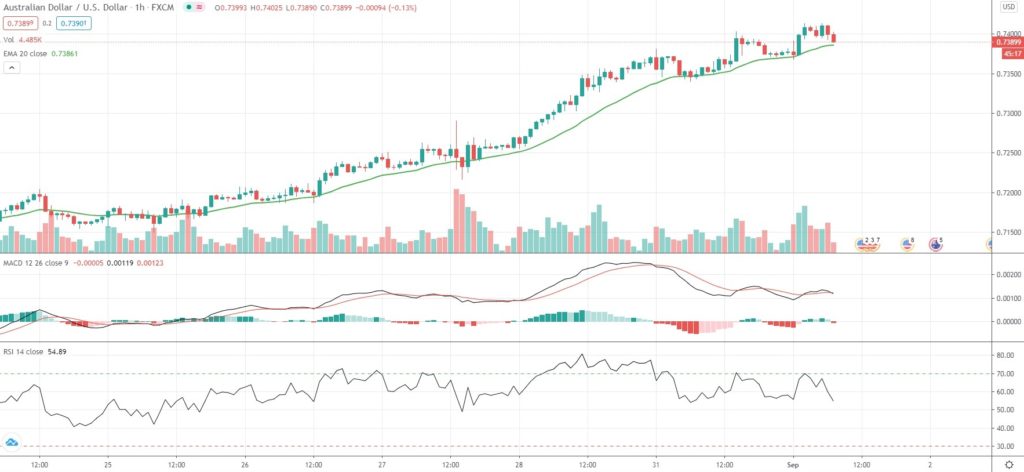AUD/USD advanced for a sixth consecutive trading day and touched a fresh two-year high in early Asian session on Tuesday, as market players increased bets that the Federal Reserve’s policy framework shift would keep US interest rates at lower levels compared to rates in other countries.
The Fed’s shift last week to target average inflation and higher employment suggested that the bank could keep borrowing costs lower for longer, which added to US Dollar selling pressure.
“The dollar is weak not only against G10 currencies but also against emerging market currencies,” Minori Uchida, head of global market research at MUFG Bank, said.
“This shows the dollar is in a downtrend that will last for some time. Low rates and an excess supply of dollars are driving this move.”
Meanwhile, Reserve Bank of Australia left the official cash rate intact at the record low level of 0.25% at its policy meeting earlier on Tuesday, in line with expectations. However, the central bank surprised markets by expanding the Term Funding Facility for banks and by extending the deadline of the program until the end of June 2021.
RBA policy makers remain committed to act in support of jobs, incomes, and businesses and continue “to consider how further monetary measures could support the recovery.”
“Policymakers appear to be increasingly uneasy about the strengthening Aussie – due to last week’s Fed pivot on inflation targeting – with the currency near 2-year highs,” Craig James, chief economist at CommSec, said.
“A stronger currency is more challenging for exporters and for the Reserve Bank to meet its own inflation target.”
RBA continues targeting an inflation rate within the 2%-3% range.
On the macro data front, Australia reported its largest current account surplus on record at AUD 17.738 billion during the second quarter, following a revised up surplus of AUD 9.023 billion in Q1. Additionally, the number of building permits in the country unexpectedly rose in July, at a monthly rate of 12.0%, which has been the first increase since February.
As of 7:10 GMT on Tuesday AUD/USD was edging up 0.27% to trade at 0.7395, after earlier touching an intraday high at 0.7414, or its strongest level since August 9th 2018 (0.7453). The major pair advanced 3.31% in August, while marking its fifth consecutive month of gains.
On today’s economic calendar, activity in United States’ manufacturing industry probably expanded for a third consecutive month in August, with the respective Purchasing Managers’ Index coming in at a reading of 54.5, according to market expectations. In July, the gauge was reported at 54.2, indicating the fastest rate of expansion since March 2019, as the sub-index of new orders rose sharply, while the sub-index of employment dropped at a softer rate. The Institute for Supply Management is to release the official report at 14:00 GMT.
At 17:00 GMT Federal Reserve Governor Lael Brainard is expected to speak on Monetary Policy Framework at a livestream event hosted by the Hutchins Center on Fiscal & Monetary Policy.
Bond Yield Spread
The spread between 2-year Australian and 2-year US bond yields, which reflects the flow of funds in a short term, equaled 13.0 basis points (0.130%) as of 6:15 GMT on Tuesday, down from 13.4 basis points on August 31st.
Daily Pivot Levels (traditional method of calculation)
Central Pivot – 0.7373
R1 – 0.7406
R2 – 0.7436
R3 – 0.7469
R4 – 0.7502
S1 – 0.7343
S2 – 0.7310
S3 – 0.7279
S4 – 0.7249






